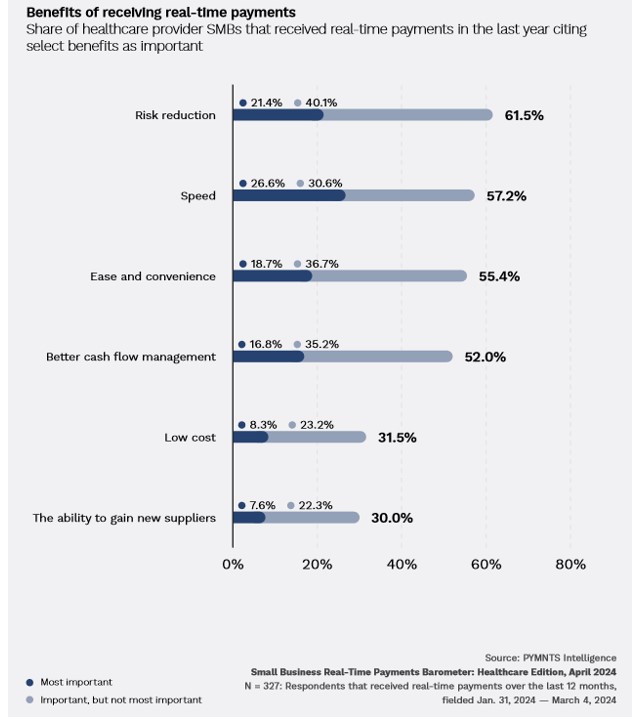Nearly One-Third of Healthcare Providers Are Waiting for $100K+ in B2B Payments

Late business-to-business (B2B) payments aren’t just a headache for the people in the accounts receivable (AR) department; for some businesses, past due payments can mean the difference between success and insolvency.
AR professionals gauge the severity of late payments by measuring days sales outstanding (DSO), a metric that tracks the average number of days it takes for a business to get paid for the products and services it delivers. DSOs are different for every industry; for instance, in the retail sector, the average DSO is three to seven days.
But as PYMNTS Intelligence found in creating its Working Capital Tracker®, “Late Payments Across Verticals: The Good, the Bad and the Ugly,” for those organizations operating in the healthcare sector, the average wait has ballooned to 47 days.
The primary culprit driving these long remittance periods is the time it takes to process insurance claims. Those claims can be delayed due to an individual’s coverage, their financial and medical circumstances, the insurers’ approval processes and more. Unpaid claims can be further delayed when payers demand additional documentation to determine if a claim is valid. Disputes can further postpone payments.
Regardless of what slows down the DSO, the waiting can have a significant impact on healthcare providers simply because of the amounts owed. One survey found that more than 37% of healthcare providers are waiting for sums ranging from $25,000 to $100,000, while another 32% are waiting to collect debts that exceed $100,000. Among insurers, the survey found Blue Cross Blue Shield owed the highest proportion to healthcare providers, accounting for 23% of the total outstanding amount owed.
And more delays may be coming. According to The Working Capital Tracker®, 30% of healthcare providers say they have seen an increase in denial rates since the close of the pandemic.
However, there may be a remedy to this plague of unpaid medical bills.
PYMNTS Intelligence found that many businesses have begun using automated claims management systems to sidestep many common payment obstacles by streamlining the insurance claims process. Fifty-two of the healthcare providers surveyed said they were replacing their outdated claims processing with advanced automated claims technology.
Another solution might be found in adopting real-time payments technology. In “Small Business Real-Time Payments Barometer: Healthcare Edition” a collaboration between PYMNTS Intelligence and The Clearing House, we found that 83% of small to mid-size businesses (SMBs) in the healthcare sector sent or received real-time payment payments in the last year.
And the key benefits of real-time payments — speed, reliability and transparency — appear to lead to healthier balance sheets. Ninety-one percent of healthcare provider SMBs that cite instant PayPal as their most-used payment rail for receiving payments report having very or extremely healthy balance sheets. The same is true for 82% of those primarily receiving instant bank-to-bank payments.

As the chart illustrates, those healthcare provider SMBs that have begun using real-time payments to collect outstanding debts are reporting an array of positives. Sixty-one percent say they have seen a reduction in risk, while 57% say they’ve seen an increase in how quickly they get paid. And while 52% say they now see better overall cash flow management, 30% credit real-time technology for enabling them to work with new suppliers.
Overall, 78% of respondents told PYMNTS Intelligence they are very or extremely satisfied with their experience in receiving real-time payments. The satisfaction level is even higher for those in accounts payable: 81% of healthcare provider SMBs told us they were very or extremely satisfied with real-time technology to issue payments.
Real-time payments have become an increasingly popular method for healthcare provider SMBs to both make and receive payments. For those still counting down their DSOs, adopting real-time payment rails may be the answer.